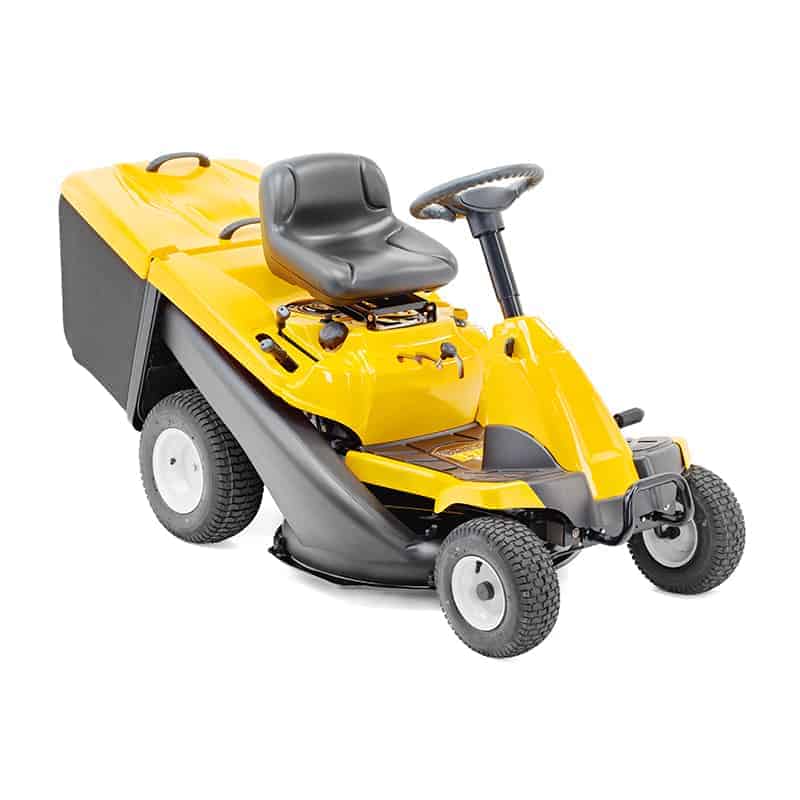This post may contain affiliate links which means I may receive a commission for purchases made through links. Learn more on my Private Policy page.
Have you ever wondered about the various types of mowers and their uses? From push mowers to riding mowers, there are numerous options available to suit different needs. Whether you have a small lawn or a large yard, understanding the different types of mowers can help you make an informed decision and achieve a well-kept lawn effortlessly. Let’s explore the world of mowers and discover which one might be the perfect fit for you.

This image is property of www.electronicshub.org.
Push Mowers
When it comes to maintaining your lawn, having the right mower can make all the difference. Push mowers are a popular choice for homeowners who prefer a more hands-on approach to their lawn care. These mowers require you to manually push them across your yard, allowing you to have more control and precision over the cutting process.
Manual Push Mowers
Manual push mowers, also known as reel mowers, are the classic choice for those looking for an eco-friendly and quiet way to mow their lawn. These mowers rely on your physical strength to power the cutting blades, making them a great option for smaller yards. They are lightweight, easy to maneuver, and give you a clean, scissor-like cut, resulting in a healthier lawn.
Self-Propelled Push Mowers
If you have a larger yard or prefer a little assistance while mowing, a self-propelled push mower might be the perfect choice for you. These mowers feature an engine that powers the wheels, allowing them to move forward effortlessly while you guide them. With self-propelled push mowers, you can tackle larger areas without exerting as much physical effort, making the task more enjoyable and less strenuous.
Riding Mowers
For those with larger properties or limited physical abilities, riding mowers offer a convenient and efficient solution. These mowers allow you to comfortably sit and mow your lawn, reducing fatigue and saving you time.
Rear-Engine Riding Mowers
Rear-engine riding mowers are a popular choice for homeowners with medium-sized to large yards. These mowers have a compact design and a cutting deck located at the back of the machine, providing excellent visibility while mowing. Rear-engine riding mowers are relatively easy to maneuver and are suitable for flat or slightly sloping terrains.
Garden Tractors
Garden tractors are heavy-duty machines designed to handle more than just mowing. These versatile machines can be equipped with a variety of attachments, such as snow blowers, tillers, and even sprayers, making them a great investment for homeowners who need more than just a mower. Garden tractors excel in tackling larger properties with uneven terrain and can handle a wide range of tasks throughout the year.
Lawn Tractors
Lawn tractors are similar to garden tractors but are more focused on mowing rather than additional attachments. They are well-suited for medium to large residential properties and provide a comfortable and efficient mowing experience. Lawn tractors feature a mid-mounted cutting deck, allowing for enhanced maneuverability and a smoother cut. These machines often offer various cutting heights and have the capacity to collect grass clippings if desired.
Zero-Turn Mowers
When it comes to efficiency and maneuverability, zero-turn mowers are hard to beat. These mowers feature rear-wheel steering, allowing for a zero-degree turning radius. This means that you can turn on a dime and easily navigate around obstacles, resulting in precise and quick mowing. Zero-turn mowers are ideal for larger properties with complex landscapes, as they can save you a significant amount of time and effort.
Stand-On Mowers
Stand-on mowers are a popular choice for professional landscapers and those with commercial properties. These mowers provide excellent visibility, control, and maneuverability. With stand-on mowers, you can quickly cover large areas and easily transition between mowing and trimming. These machines are designed for efficiency and comfort, allowing you to maintain a professional-looking landscape in a shorter amount of time.
Robotic Mowers
If you’re looking for a hands-off approach to lawn care, robotic mowers might be the perfect choice for you. These innovative machines take care of your lawn automatically, saving you time and effort.
Automated Mowing
Robotic mowers operate autonomously, patrolling your yard and cutting the grass as needed. They use sensors to detect the boundaries of your lawn, preventing them from wandering off into other areas. You can set schedules for the mower to operate, and it will return to a charging station when it needs to recharge. Automated mowing is a convenient and energy-efficient way to maintain a well-manicured lawn.
Navigation Technology
Robotic mowers use various navigation technologies to ensure efficient and precise mowing. Some models use boundary wires to define the mowing area, while others rely on GPS or mapping systems to navigate your yard. These technologies enable the mower to adjust its mowing pattern, adapting to different terrains and avoiding obstacles. Advanced models can even handle complex landscapes with slopes and irregular shapes.
Safety Features
One concern many homeowners have with robotic mowers is safety. However, these mowers are equipped with numerous safety features to protect both the mower and your lawn. They have sensors that detect pets, children, or any other objects that may come into their path, immediately stopping or changing direction to avoid them. Robotic mowers also have anti-theft features, such as PIN codes, so you can be confident that your investment is secure.
Hover Mowers
Hover mowers, also known as air cushion mowers, offer a unique and lightweight solution to maintaining your lawn. These mowers use a cushion of air to glide over your grass, making them incredibly maneuverable and suitable for uneven surfaces.
Air Cushion Mowers
Hover mowers are designed with a rotary blade that creates a powerful airflow beneath the mower, creating the air cushion effect. This allows the mower to hover and effortlessly glide over the grass, reducing friction and making it easy to move in any direction. The lightweight design of hover mowers makes them ideal for small yards or areas with intricate landscapes.
Benefits and Limitations
The primary benefit of hover mowers is their maneuverability. Since they hover on a cushion of air, they can easily navigate around tight corners, flower beds, and other obstacles without damaging the grass or plants. Hover mowers are also lightweight, making them easy to transport and store. However, they may struggle with taller or denser grass, as the cutting power may not be as strong compared to other types of mowers. Additionally, hover mowers may leave behind a less manicured finish compared to traditional rotary mowers.
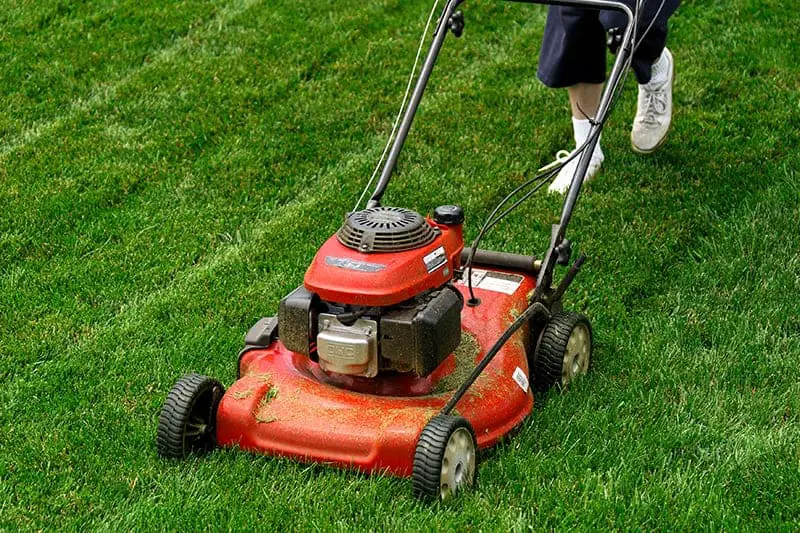
This image is property of www.trees.com.
Cylinder Mowers
Cylinder mowers, also known as reel mowers, are a popular choice for sports field maintenance, golf courses, and homeowners who desire a precise and professional-looking cut.
Reel or Real Mowers
Cylinder mowers use a set of rotating blades, also known as reels, to cut the grass. The blades rotate against a fixed bottom blade, creating a scissor-like action that delivers a clean and precise cut. This cutting technique is ideal for achieving a close shave and a neat appearance, making cylinder mowers a top choice in professional settings.
Golf Course and Sports Field Maintenance
Cylinder mowers are widely used in golf course and sports field maintenance due to their ability to deliver a predictable and consistent cut. The precise cut achieved by cylinder mowers promotes healthier turf growth and enhances the playability of the field. The ability to adjust cutting heights and widths makes these mowers versatile for various sporting activities.
Mulching Mowers
Mulching mowers are designed to finely chop grass clippings and distribute them back onto the lawn, providing natural fertilization and reducing the need for manual bagging or raking.
Function and Benefits
Mulching mowers feature a specially designed cutting deck that creates a vortex of airflow. This airflow forces the grass clippings to circulate within the mower, where they are repeatedly cut into small pieces. These tiny clippings are then dispersed back onto the lawn, where they decompose quickly and release nutrients back into the soil. Mulching mowers help to promote a healthier and greener lawn by providing natural fertilizer.
Reduced Lawn Waste
One of the significant advantages of mulching mowers is the reduction in lawn waste. Instead of collecting and bagging grass clippings, mulching mowers recycle the clippings back into the lawn, allowing the nutrients to nourish the grass. This not only saves you time and effort but also reduces the amount of waste sent to landfills. Mulching mowers are an environmentally friendly option that helps you maintain a beautiful lawn while minimizing your carbon footprint.
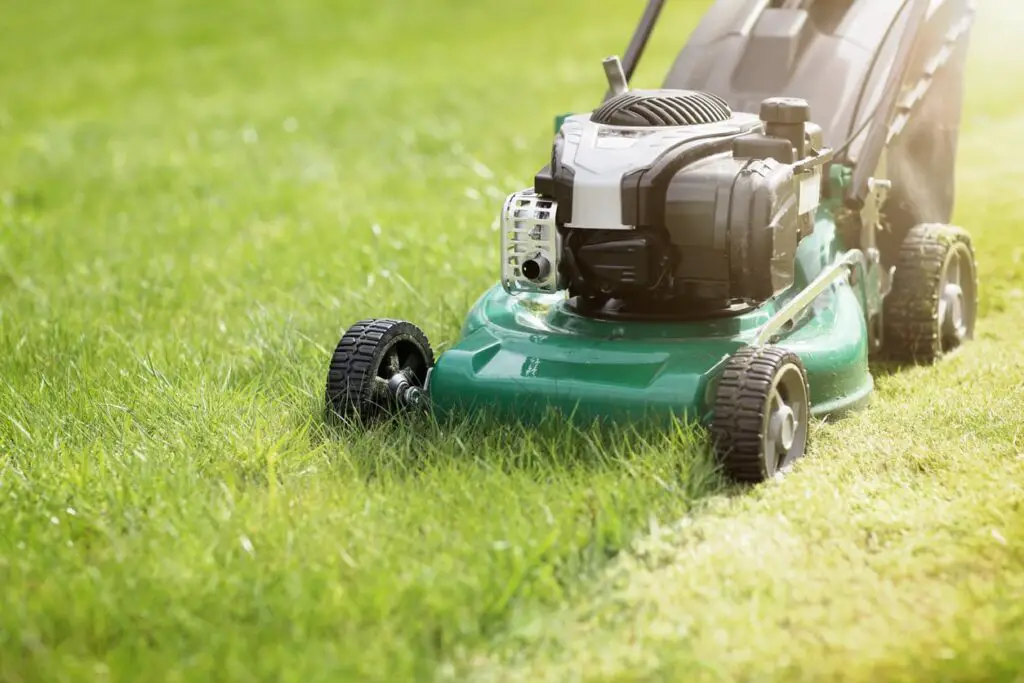
This image is property of www.gardeningknowhow.com.
Mulching vs. Bagging Mowers
While mulching mowers offer the benefits of natural fertilization and reduced waste, bagging mowers provide an alternative solution for specific lawn care needs.
Differences Between Mulching and Bagging
Mulching mowers finely chop the grass clippings and distribute them back onto the lawn, while bagging mowers collect the clippings in a bag attached to the mower. Mulching allows the clippings to decompose and provide nutrients to the soil, while bagging leaves you with a clean and debris-free lawn. Bagging mowers are ideal for removing excessive grass growth, preventing thatch buildup, or maintaining a pristine appearance. Mulching mowers, on the other hand, focus on enriching the soil naturally and reducing waste.
When to Use Mulching or Bagging
The decision between mulching and bagging ultimately depends on your lawn care goals and the condition of your yard. If you prefer a tidy and manicured look or if your grass is excessively long and needs to be removed, then a bagging mower might be the right choice. On the other hand, if you want to promote a healthy lawn and reduce waste, a mulching mower offers the perfect solution. Some mowers even offer the option to switch between mulching and bagging, providing you with the flexibility to adapt to different circumstances.
Push Mowers vs. Riding Mowers
Choosing between push mowers and riding mowers depends on various factors such as the size of your yard, your physical capabilities, and personal preferences.
Comparison in Function and Features
Push mowers require you to manually push them across your yard, providing you with more control and precision over the cutting process. They are suitable for smaller yards and give you the opportunity for a more hands-on approach to lawn care. On the other hand, riding mowers allow you to sit comfortably while mowing, reducing physical strain and covering larger areas more efficiently. Riding mowers come in various types, such as rear-engine, garden tractors, lawn tractors, zero-turn, or stand-on mowers, catering to different needs and preferences.
Factors to Consider
When choosing between push mowers and riding mowers, consider the size and terrain of your lawn. Push mowers are ideal for smaller yards with even terrain, while riding mowers are better suited for larger properties or uneven landscapes. Additionally, take into account your physical capabilities and preferences. If you enjoy an active approach to lawn care and want more control, a push mower might be the better option. If comfort and efficiency are your priorities, a riding mower can significantly simplify the task.
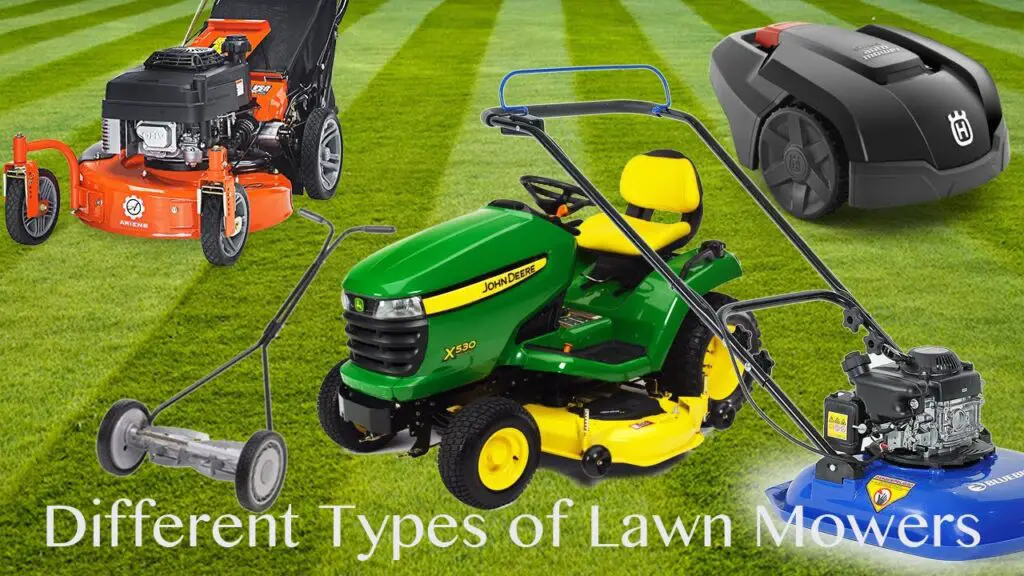
This image is property of i.ytimg.com.
Gasoline Mowers
Gasoline mowers have long been the go-to choice for many homeowners, offering reliability and power for a wide range of lawn care needs.
Traditional Lawn Mowers
Gasoline-powered traditional lawn mowers are widely used for residential lawn care. These mowers typically feature a pull-start engine, providing reliable and robust performance. Gasoline mowers offer versatility, as they can handle various grass types and cutting heights. They are also capable of tackling tougher mowing conditions, such as tall or wet grass. With regular maintenance and fuel refills, gasoline mowers can be a reliable workhorse for your lawn.
High-Powered Commercial Mowers
For commercial lawn care or properties with extensive landscaping, high-powered commercial mowers are essential. These mowers often run on gasoline engines and provide increased power and cutting capacity. High-powered commercial mowers are designed to handle demanding tasks, such as mowing large areas, cutting through thick grass, or handling rough terrain. Their robust construction and advanced features make them a valuable tool for professional landscapers or those with vast properties to maintain.
Electric Mowers
Electric mowers have gained popularity in recent years due to their environmental friendliness and ease of use. They offer an efficient and quieter alternative to gasoline mowers.
Corded Electric Mowers
Corded electric mowers are powered by electricity and require a power outlet to operate. These mowers are typically lightweight, easy to maneuver, and produce less noise compared to their gasoline counterparts. While they offer the convenience of continuous power supply, the cord limits their range and may require careful handling to prevent tripping hazards. Corded electric mowers are best suited for smaller yards or properties with an easily accessible power source.
Battery-Powered Electric Mowers
Battery-powered electric mowers provide the freedom of movement without the need for a cord. These mowers are powered by rechargeable batteries, which can be easily removed and replaced. Battery technology has improved significantly over the years, allowing for longer run times and faster charging. Battery-powered mowers offer convenience, as they can effortlessly tackle medium-sized yards without the restriction of a cord. They are quiet, emission-free, and require minimal maintenance. However, it is essential to consider the battery life and to have spare batteries available for larger properties.
With the wide variety of mowers available, choosing the right one for your needs can seem overwhelming. Consider the size of your lawn, the terrain, and your personal preferences to determine which mower type suits you best. Whether you prefer a hands-on approach with a push mower, the convenience of a riding mower, the robotic efficiency of automated mowing, or the environmental friendliness of an electric mower, there is a perfect option out there for you. Happy mowing!
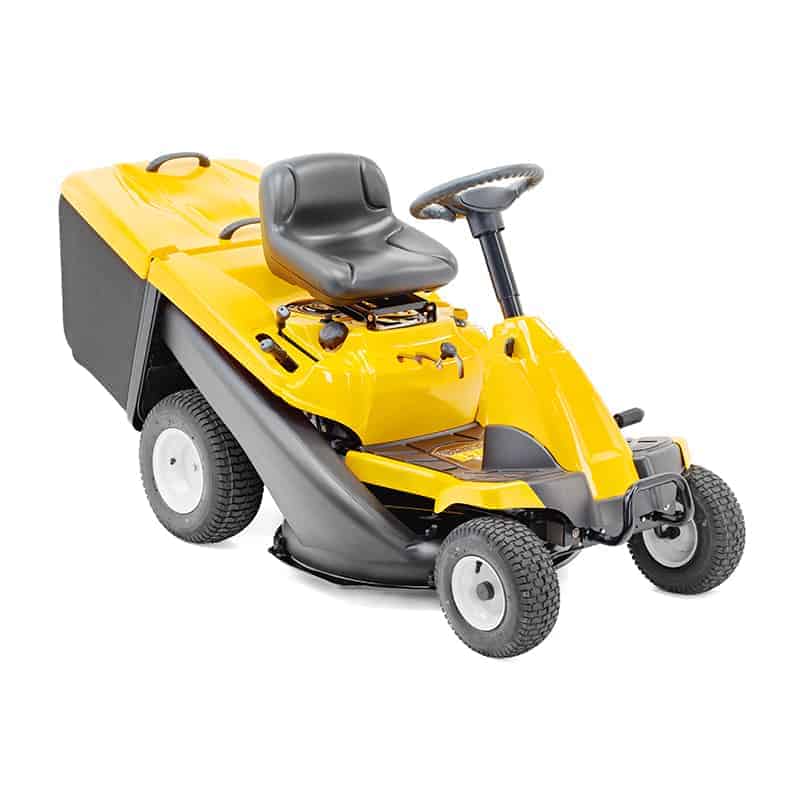
This image is property of www.trees.com.
This post may contain affiliate links which means I may receive a commission for purchases made through links. Learn more on my Private Policy page.

